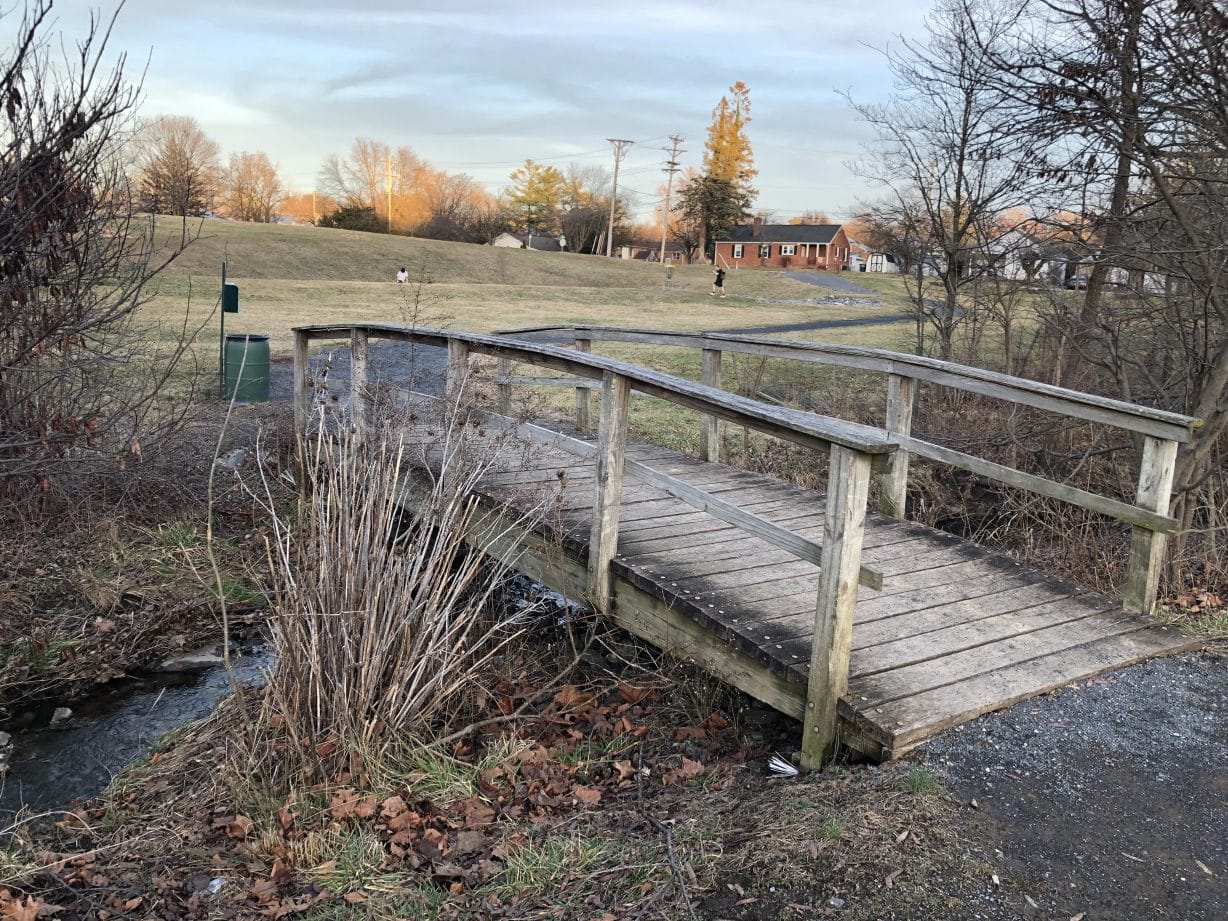
By Sofia Samatar
“The Friendly City” is a weekly column about walking in Harrisonburg that will run during 2024. Each week, your friendly correspondent, writer and teacher Sofia Samatar, will reflect on a walk in our city.
Today I’m thinking about the authenticity of little things.
Walk across town, westward toward the Alleghenies, on a springlike winter day, the snow all melted, the wind smelling of the thaw, the sky a rippling patchwork of blue and gray with distinct, finely-drawn clouds gathered low above the mountains. How serene these clouds look, like floating islands, dark on the bottom, shimmering white on top, repeating the shape of the mountains as the mountains repeat the color of the sky, only in a deeper shade, a flat and opaque blue. It’s as if the sky and the mountains have been painted with the same brush, but on the mountains the paint has been laid on more thickly: the work of a frugal artist with a single pigment in the box, an extraordinary genius of minimalism.
At the end of the road, when I reach the church, the wind comes rushing across a stretch of open land, this broad meadow I imagine belongs to the church, a swath of pale straw-yellow, tinged with azure as if it’s inhaled some of the color of the sky. From here I can trace the road with a glance, all the way down the hill, then all the way up on the other side of Market Street, taking in the houses, the trees, the farm equipment dealership where ranks of red and blue tractors stand in rows, and beyond that the forest, the trees rising like smoke against the sky: the dim, bosky shadow of Westover Park.
It’s a little forest, but it’s still a real forest. As I walk downhill, I feel it’s time for me to accept the Friendly City as a real city. The church on the opposite side of Market Street slides into view, so that I have one church behind me and another in front. And there—yes—beyond the church on Market Street, I glimpse the steeple of a third church! Pausing just here, if I turn my head, I can see three churches. I remember when our cousins came to visit, flying in from their home in the capital of another country, how amazed they were at our abundance of churches, making up a Spot the Steeple game as they explored the town. “Look, another church!” “Hey, there’s another!” I wonder if all these churches can possibly be full on a Sunday morning. And that reminds me of the famous verse, “For where two or three are gathered together in my name, there am I in the midst of them.”
A compressed philosophy of minor things.
Cross Market Street. There’s one of my favorite houses, huddled beneath a stand of towering oaks. How delightful to see a little house surrounded by big trees! It looks as if it’s snuggling against their trunks. With its shady, secretive porch, it has the charm of a hobbit house, a burrow, a place to curl up and drowse through the winter.
A mechanical droning reaches me from the automotive shop on Market Street. In the Friendly City, you’re always running up against something mini-industrial, alongside something mini-rural, mini-wild, or mini-urban. And each fragment is fully itself.
Across Dogwood Street, I step onto a grassy slope with the delicious name of Green Angel Park. The creek, Blacks Run, flows along the bottom. There’s a little wooden bridge where I stop to look down at the water, which gleams darkly as the daylight starts to fade. Trees crowd the banks of the narrow creek, and tufts of long, yellowish grass cushion its edges, so that it looks soft, a creek bed that’s really a bed, the water lying cozy there, just on the verge of sleep, murmuring gently to itself among the stones.
My bridge spans the water, taking me safely from bank to bank. And although I might be able to jump the creek with a good running start, my bridge is still a bridge. Oh, happy bridge, little toy bridge! I want to take a piece of it home, a splinter.
On my way back, I pass a yard that’s completely overgrown, shaggy among the neighboring clipped lawns. This rampant yard, with its profusion of dry weeds and brown winter branches, creates a dark, rustling pocket in the curve of the street. It might feel sinister if it weren’t so small you can see right through it to the porch. In the tangled ivy, a crooked sign reads WILDLIFE SANCTUARY. There’s something comical about it—isn’t this wee jungle claiming too much? What kind of wildlife is taking refuge here, other than squirrels and spiders? But then again, aren’t those creatures legitimately wild, even if pint-sized? And surely this yard might attract other beings to its cover—shy groundhogs, warblers in search of insects, an exhausted possum seeking relief from the terror of the traffic.
Maybe this sign is a joke, like a grin toward neighbors who might frown at its bristling sprawl. Or maybe it means to say seriously: Here is the dark wood. Through the knotty branches, I see an enigmatic line of standing stones: a miniature Stonehenge awaiting a ritual visit from Lilliputian druids.
